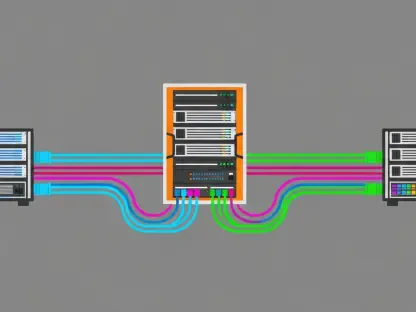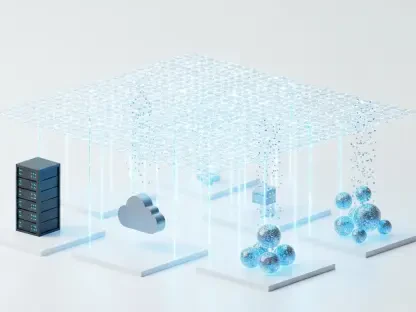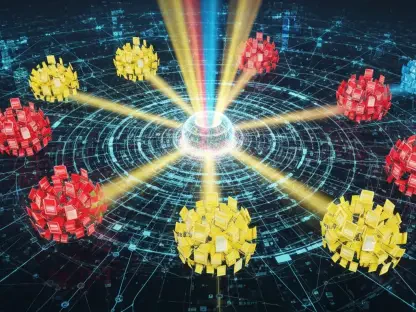Chloe Maraina, a recognized expert in the realm of data visualization and management, continues to push the boundaries of business intelligence, providing a nuanced perspective on the shifting landscape of technology solutions. In this insightful conversation, she delves into ExtraHop’s transformative journey and its innovative sensor technology, revealing how it reshapes enterprise network security.
How has ExtraHop’s focus evolved since its inception in 2007?
ExtraHop initially made its mark with network performance monitoring, but as the landscape evolved, so did their focus. They’ve smartly transitioned into the network detection and response domain, now aiming to encompass comprehensive network intelligence and security within their solutions. This evolution marks a significant shift towards addressing wider and more complex enterprise needs, beyond just performance monitoring.
What challenges does the new all-in-one sensor address for enterprises?
The primary challenge it tackles is the proliferation of point tools in network monitoring and security. Enterprises often juggle various specialized sensors and tools, leading to inefficiencies and gaps in security coverage. The unified sensor consolidates multiple functions, streamlining operations and enhancing the clarity and efficiency of network management and security.
Can you explain what functions are consolidated in the new unified sensor?
This sensor amalgamates functions that traditionally needed separate sensors, including network detection and response, intrusion detection systems, and performance monitoring, alongside packet capture capabilities. By combining these features, it provides a more cohesive approach to managing network security and performance.
How does ExtraHop’s expansive view of Network Detection and Response differ from traditional approaches?
ExtraHop adopts a broader scope, viewing network detection and response as encompassing all aspects of network intelligence—from visibility to performance assurance and comprehensive threat detection. Traditional approaches often limit themselves to specific facets, whereas ExtraHop integrates a wider array of functionalities into its platform.
What is the significance of the sensor’s architecture in processing network traffic efficiently?
The sensor’s architecture is designed for efficiency in processing network traffic, thanks to a sophisticated packet processing pipeline that extracts needed data in a single pass. This capability ensures streamlined data handling from Layer 2 through Layer 7, maintaining performance while providing deep insights.
How does deep visibility help ExtraHop provide insights across the network stack?
Deep visibility enables monitoring from basic connectivity to intricate application-level transactions. It allows ExtraHop to pinpoint issues, discern the root cause, whether related to application servers, network, or endpoint issues—a critical capability for efficient troubleshooting.
How does ExtraHop determine whether performance issues are related to application servers, networks, or endpoints?
By analyzing comprehensive data flow from Layer 2 to Layer 7, the unified sensor can map and correlate network activities, helping distinguish between different types of issues. This detailed visibility ensures the precise identification of problem sources, offering insightful resolutions.
How does the new sensor integrate with ExtraHop’s RevealX platform?
It feeds telemetry to RevealX, ExtraHop’s cloud-scale ML/AI engine, enhancing threat detection and analysis capabilities. This integration allows the sensor to leverage existing AI engines to power network insights and improve security management workflows dynamically.
What are the deployment options available for ExtraHop’s all-in-one sensor?
The sensor is designed for versatility, supporting deployment across physical appliances, virtual machines, and cloud environments. This adaptability ensures it can meet diverse enterprise needs, from branch offices to extensive data centers.
How does the sensor’s scalability address diverse network needs, such as branch offices versus data centers?
Scalability is central to its design, allowing deployments from one-gig sensors for smaller branches to 100-gig sensors for large data centers. This flexibility ensures optimal sensor usage tailored to specific network sizes and requirements.
What specialized capabilities has ExtraHop developed for cloud-native architectures like Kubernetes?
For cloud-native environments, ExtraHop has crafted capabilities featuring agents that work alongside Kubernetes pods. These agents ensure seamless traffic mirroring and feed data into cloud sensors, integrating smoothly within modern, dynamic cloud infrastructures.
How does ExtraHop’s approach align with the industry trend toward platform consolidation?
ExtraHop’s strategy supports this trend by reducing complexity and enhancing operational efficiency. Its solutions are designed not just for standalone functionality but to complement existing technologies, aiding enterprises in integrating diverse systems more effectively.
How does ExtraHop position itself alongside SIEM and XDR solutions?
Rather than competing outright, ExtraHop positions itself as a partner, enhancing other platforms by offering unique network-based insights. This collaborative approach ensures that enterprises can leverage comprehensive data from various sources seamlessly.
What role does generative AI play within ExtraHop’s platform?
Generative AI is pivotal to evolving their platform, automating tasks and enhancing user interaction through dynamic data analysis and search capabilities. It’s a tool that boosts efficiency and aids in better decision-making.
Can you describe the AI search assistant released by ExtraHop in 2024?
The AI search assistant enhances usability by enabling natural language queries, thus simplifying complex data searches for administrators. This innovation highlights ExtraHop’s commitment to user-friendly interfaces and advanced technology integration.
What future plans does ExtraHop have for automations using agentic AI workflows?
ExtraHop is developing automations that leverage agentic AI workflows to customize product settings and streamline investigation processes. These ongoing enhancements aim to simplify enterprise operations and optimize incident handling through proactive technology.
How does ExtraHop’s use of generative AI contribute to incident response and investigation steps?
Generative AI automates key procedures in the incident response cycle, ensuring swift and accurate investigation processes. By reducing manual overhead, it empowers teams to focus on strategic decision-making, amplifying overall security effectiveness.
Do you have any advice for our readers?
Embrace technology’s evolution and stay informed. Understanding and integrating new tools like those offered by ExtraHop can transform how your organization manages network security and data insights, boosting efficiency and fostering innovation.









